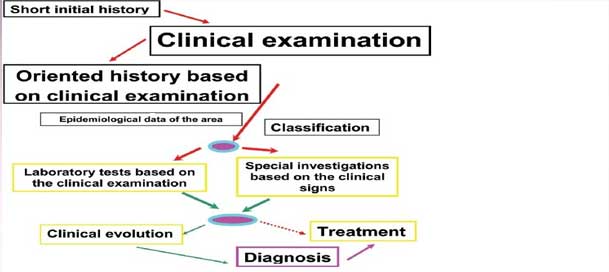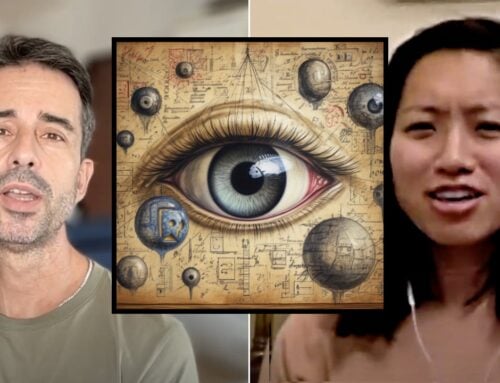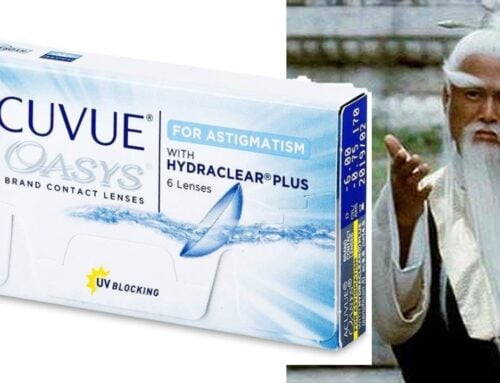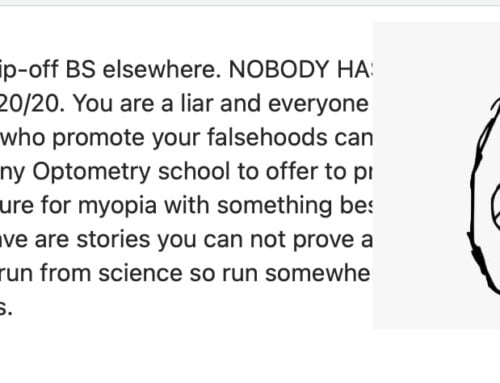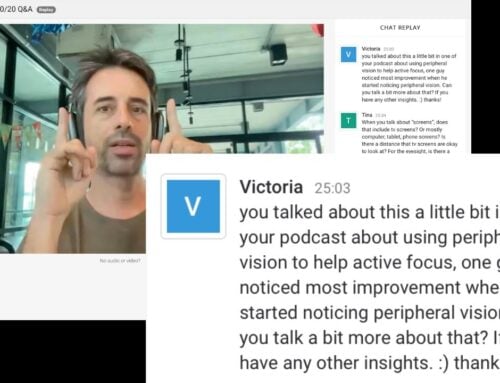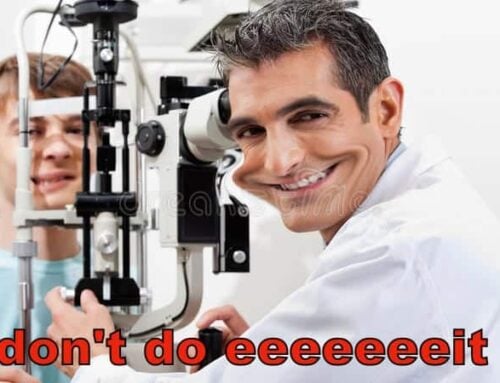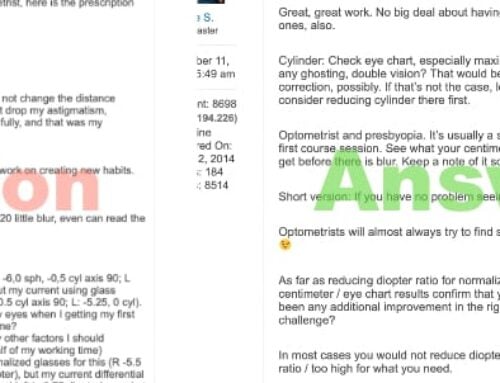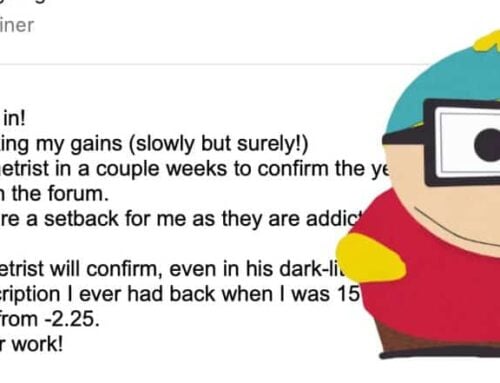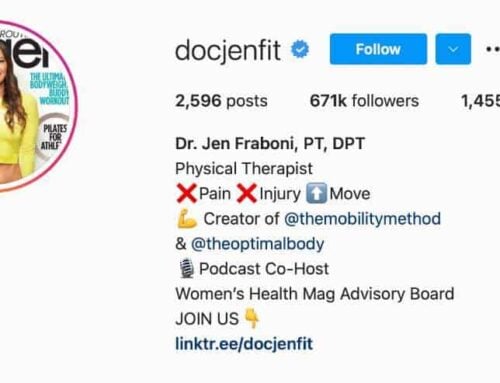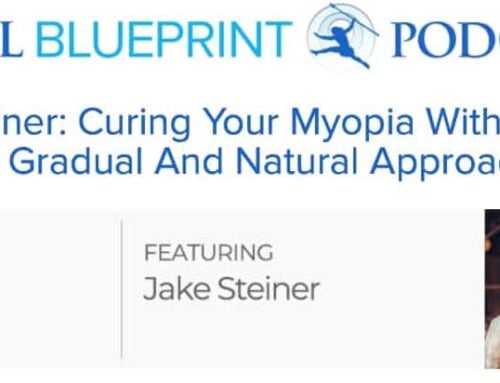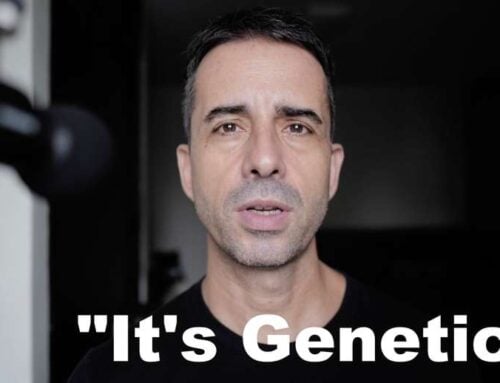This article, a bit off-topic, is to provide a bit of perspective on what a doctor (most doctors, certainly not all) does for you. Not intended as a judgment, I merely mean this to help you identify the potential flaws of the current treatment paradigm. Any time you can not find a solution to what ails you, looking at the bigger picture of the whole process may help with alternate solutions.
Earlier today I received an e-mail, which is just like countless others I get from readers of this site. In it, the individual points out that he had been to all the best specialists to try to cure his condition, with no luck. He wasn’t asking for my help, nor would he accept any suggestion – since apparently I don’t fall into the category of “the very best”.
Well enough. It means less work for me, so I should not feel offended. And it provided a bit of inspiration for this article.
Let’s look at what happens, when you step into the doctors office:
1. The doctor asks you to describe your symptoms.
This is the discovery process. He/she is mentally paging through symptoms matching any particular illness. If anything is close, he/she may ask whether you have additional symptoms, which may match the potential illness (which is basically just a term to describe a set of symptoms and their cause).
At this point, the doctor may conduct additional tests, to confirm or rule out potential matches for an illness.
2. The doctor makes a diagnosis.
Once we complete the discovery process and establish a match, often by confirming the suspected illness through tests or other means, we get a diagnosis.
As we do here often, for the sake of readability and brevity, I am grossly oversimplifying. If you are a doctor, please don’t be upset here – of course medical science is complex and human accomplishment in this field is often nothing short of amazing. I merely simplify here, to make a point about how the process can sometimes fail us.
3. The doctor matches the illness to a procedure or prescription.
Think about a doctor’s education. There is extensive schooling, first. Then a lengthy period of practical application, with experienced supervision, before the new doctor ever steps out on his/her own.
Close to a decade may go by, until the doctor is out in his own practice or speciality at a hospital or clinic.
What happens during all of this time, as well as the time in practice?
Our understanding of the human body and illnesses continue to evolve. New studies, findings, cures, and procedures are added constantly. The field is every evolving, sometimes rapidly and dramatically. Where does the continuing education, which is key, come from?
There are several avenues. One of them, though not official, happens through the representatives of prescription drug companies.
If I wasn’t retired, I’d hesitate to write any of this. And none of it is intended as criticism towards the doctor. It’s merely an observation of the reality of most practices:
As a doctor, you will be asked as often as several times a week, to take a few minutes to get a pitch about some new medication. And some of them you will listen to. This is where you get the run down of what the new pill or procedure can fix. These pitches will number in the many hundred’s over a physician’s career. No matter what you want to call them, they are a significant part of the ongoing education of most doctors.
Think of where the money comes from, in the medical field. Money that is necessary to have labs, buy raw materials, equipment, hire staff, conduct experiments, have animal and human trials, pass government requirements. It’s not good or evil, it’s just fact.
Does a lot of money pour into looking at root causes such as diet and lifestyle? Of course not. Advice specific to changing food intake isn’t making any money for anyone, hence there is no money for the labs and staff and trials necessary to get government approval for a treatment.
The money is in pills and procedures. And since of course we need the money, that’s where the education goes.
All of this is significantly biased, one sided, and far too short of an article to do the full complexity of this topic any justice. Take it as nothing more than idle musings of an old man, a vague pointer to consider the bigger picture of why some of your ailments are never fully cured – rather just pacified, symptoms reduced, at the cost of a pill or procedure.
How does any doctor find the time to educate him/herself about alternatives? And if he/she does, how does one reconcile that will approved treatment avenues? What happens is an alternative treatment fails, and the doctor is held responsible?
It’s unfathomable. It’s not only practical but also a matter of self preservation, to stay exactly within the bounds of the status quo.
If any of my clients wear a reduced prescription and get into a car accident while wearing it, on my counsel, I’m finished. I have to have signed agreements about prescriptions, and I still step out very far on a very narrow ledge, to offer a reduced prescription. In fact, no optometrist in his/her right mind would *ever* do such a thing. The liability risk is enormous. Multiply that by thousands of patients over a few decades, and being sued out of financial existence is nothing less than a certainty.
You could do it in some countries, for a time. Not in litigious ones, certainly. But you’d always be worrying, and certainly not paying back student loans (in countries where this education requires tuition payment) in less than a few decades (prevention and rehab makes vanishingly small amounts of money, compared to working in the proper prescription channels).
So this is what happens. It is great to be retired, put up a Website, shed any doctor titles and responsibility to bow to the establishment. Here it’s a course, you find your own prescriptions, and I’m just a voice from the ether, providing non-medical advice suggestions. It’s one of life’s many ironies. I’m free to tell you the truth as I see it, only after I stop wearing the sanctioned titles of a man who you are supposed to trust with these things.
Back to the point of this extended ramble:
If you ask the optometrist about an alternative to prescriptions or procedures, you won’t get an answer. His training is to 1) gather symptoms, 2) identify illness, 3) find matching prescription or procedure to treat. What else could he do?
That’s it. That is the prevailing status quo logic of medical advice.
If you have dry eyes, and been to every specialist and gotten no answer, is it because it’s incurable? Or is it that no pharmaceutical company has come by his/her office, with a pill to fix it? Would the answer be simply the highly reduced blink-rate while looking at a computer monitor all day, paired with tear flow blocking contact lenses, and an artificially low ambient humidity caused by an air conditioned office? Could we throw in a Thyroid panel to sort out any latent secondary causes? We could do all those things. That wouldn’t do though, for the foremost experts, the very best in identifying symptoms and illnesses, and prescribing pills and procedures.
Often enough, especially acute problems are repaired very efficiently in retail medicine. Once we get into more vague symptoms of a chronic aliment, things get more complex. It’s murky and unfortunate, but if you are looking for lifestyle based repair of your body, you will rarely get the answers you seek from the establishment. And outside of the establishment, it’s a jungle.
Welcome, then, to the jungle.

